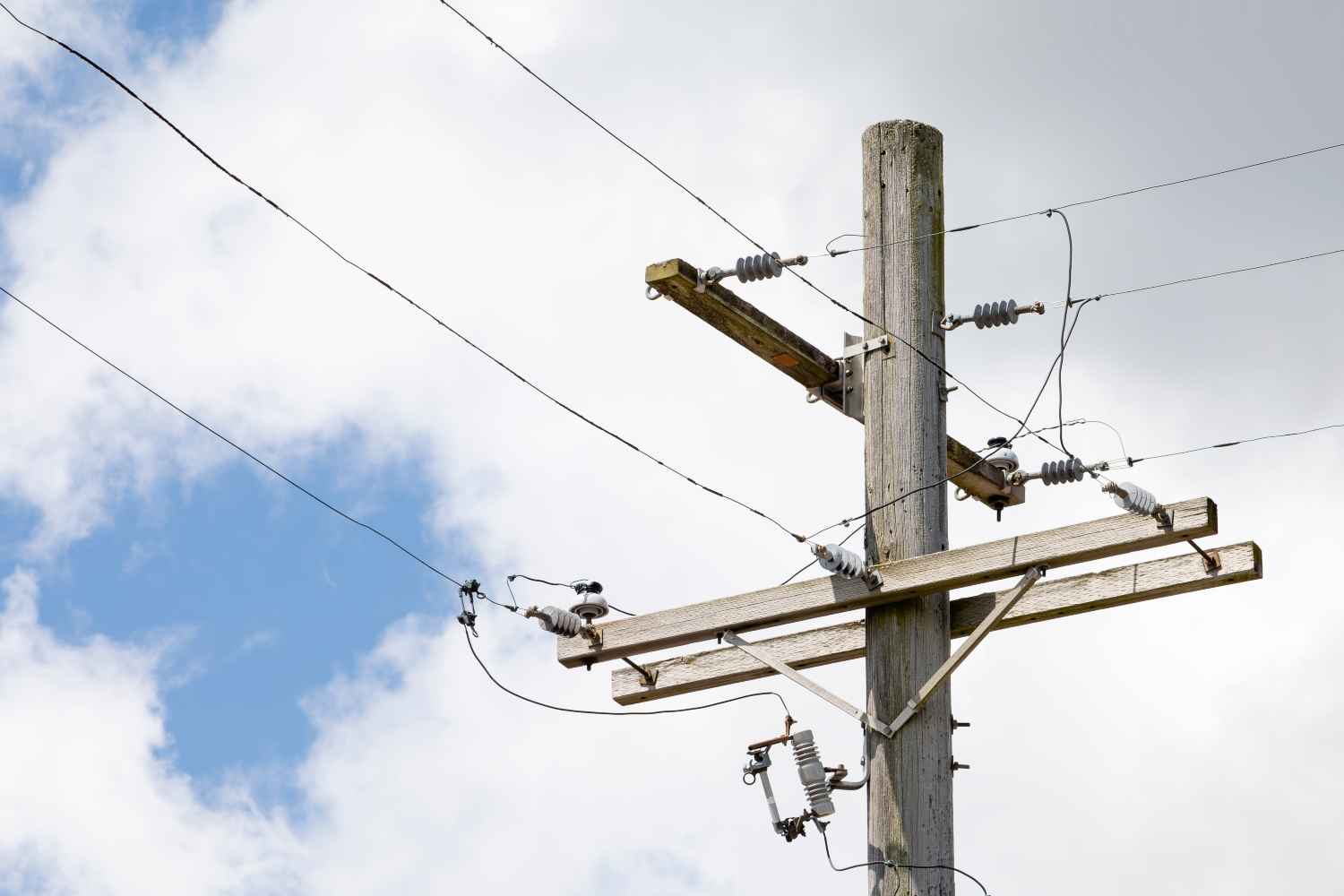
Out of the roughly 180 million utility poles in the U.S., an estimated 130 million are wooden. Those traditional poles have long been the backbone of electrical and communication networks. However, susceptible to pests and extreme weather events they come with limitations and risks. And even in ideal conditions they weaken as they age.
The need to strengthen the nation’s electrical grid and communications networks has renewed the focus on poles, including inspection and maintenance practices that can help ensure reliability as well as alternatives to wood.
The Utility Pole Maintenance and Upgrades Resilience Investment Guide, a report prepared by Lawrence Berkeley National Laboratory for the U.S. Department of Energy, Grid Deployment Office in September 2024, noted that repaired, reinforced, or replaced poles of any material increase safety by preventing injuries.
The guide was produced under a DOE grant designed to enhance electric grid resilience against extreme weather and other natural disasters. When it comes to pole inspection and replacement practices, it noted that the National Association of Regulatory Utility Commissioners (NARUC) found that more effective practices substantially reduce the need for pole replacement. For example:
DTE Energy’s Pole and Pole Top Maintenance and Modernization Program moves beyond the utility’s previous replacement-upon-failure protocol for wooden poles with more frequent and intensive inspections to identify poles in need of repair, facilitating reinforcement, when possible, rather than replacement.
Florida Power & Light (FP&L) moved to a conditioned-based approach to pole inspection, repair, and replacement.
Southern California Edison’s 2020-2022 wildfire mitigation plan replaced critical wood poles with more fire-resistant composite or lightweight steel poles.
Making choices
For utility poles that have to be replaced, utilities now have choices between traditional wood and other designs. The primary advantages of selecting non-wood materials, the guide related, is that they can be more resilient to extreme events, lighter in weight in some cases, and they can avoid environmental concerns of wood poles, which are treated with preservatives.
Non-wood poles can also have a longer service life because they are resistant to rot and decay. The average life span of steel and composite poles has been estimated at 80 years and concrete poles at roughly 60 years. The average life span of wooden poles is generally estimated to be in the 30-50-year range.
To meet their needs for infrastructure integrity utilities often use a wide range of pole materials depending on location. Their choices often reflect a balance between cost and performance.
One non-wood alternative for swapping out utility poles to help shore up the electric grid are the composite poles produced by Resilient Structures (RS). The company offers more than 240 utility pole configurations to meet distribution, transmission, substation or communication needs. Pole options range from 20 to 170 feet in length.
According to Resilient Structures, the blend of proprietary materials such as fiberglass, polyurethane resin and other composites used to manufacture RS poles means they are non-conductive and safer for work crews. The design also absorbs elastic strain energy in high load situations, which mitigates the threat of extreme weather events like tornadoes, hurricanes, wind bursts, and ice storms.
A case in point that illustrates the strength of RS poles was when a series of record-setting tornadoes tore through Western Kentucky in December 2021. After the tornadoes had passed Hopkinsville, within the service territory of Pennyrile Electric, an electric cooperative served by the Tennessee Valley Authority, over two miles of wood distribution poles laid on the ground from wind load induced failure. However, three RS composite poles near a substation stood strong, stopping three different cascading wood pole failure events and preventing further damage to the system and substation components.
“When tornadoes came through the Hopkinsville area on December 10, 2021, over two miles of Pennyrile distribution line was affected,” said John Cross at Pennyrile. “A large quantity of wood poles on the main line were destroyed and wire was on the ground. RS composite poles were also on this line and did not fail. In fact, they supported the downed line overload until the wood poles could be replaced and the wire raised.”
Meeting on-site challenges
By leveraging unique properties, composite utility poles are increasingly a viable alternative. They can address deployment and installation challenges, reducing time and associated labor costs.
Building a reliable grid, for example, requires utilities to place poles in less-than-ideal locations, Resilient Structures noted. These can include residential and commercial back lot and other off-road locations, swamps, wetlands and marine facilities requiring access by water and areas where poles are located adjacent to major thoroughfares. In many of those cases there is a need for costly specialized equipment for installation.
Composite poles are lightweight, the company pointed out, allowing them to minimize the need for access by heavy equipment, and to be transported on lighter duty vehicles, boats and even hand dollies in some instances. In addition, the lighter composite poles can often be delivered to a site on a single truck at a much lower cost compared to longer, heavy weight structures. On roadside jobs as well, there can be many installed vertically one at a time, eliminating the need for equipment with wide outriggers, which blocks lanes and forces traffic restrictions.
Resilient Structures also noted that the reduced maintenance needs and longer life span of composite poles provide for savings, despite any higher initial investment. Saving money in the long term they can reduce Total Cost of Ownership by minimizing the need for future replacement and additional installation costs.
In an era where extreme weather events, wildfires, and other natural disasters pose increasing risks to the nation’s electrical grid and communications infrastructure, the reliability of utility services has never been more important.
Within the utility industry, ensuring a stable and reliable grid is more than just a priority— it’s a necessity. With effective inspections and maintenance, and new technologies, utilities are better positioned to improve pole durability and extend service life.